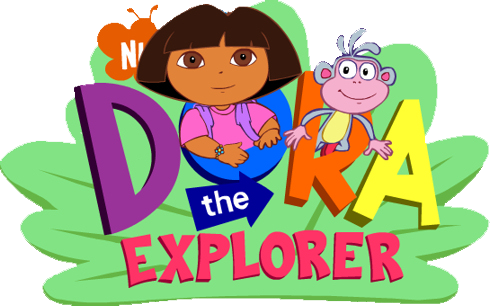Update: 21 December 2024
How Big Food is Targeting My Toddler
Author: Pamela Mejia, MPH, MS, Berkeley Media Studies Group
Dora, mama! Dora!
I'm walking with my 22-month-old daughter through Target®, and I'm not surprised to hear her yell the name of her favorite cartoon character, Dora the Explorer. What does surprise me is that we're not in the toy aisle, or the book aisle, or even the clothing section — we're in the area of the store set aside for groceries, buying bread and orange juice. My sweet daughter, who watches the popular Nick Jr. show every day and cherishes her Dora the Explorer shoes, toys, and books, stares, fascinated, at a wall of boxes printed with the famous character's round, wide-eyed face.
DORA, MAMA! DORA! she yells, reaching out and grabbing a box, which, I notice, is full of fruit-flavored gummy candies. No no, baby, I murmur, trying to pull the box away, but she won't be dissuaded — she's found Dora, and she won't let go.
My daughter doesn't really like candy. She loves string cheese, mashed potatoes and, somewhat surprisingly, seaweed salad from our favorite Japanese restaurant. She has no idea what's in the box, but because of what's on it, it's all she wants. People are starting to look at me and my plaintive, fussy daughter. I'm afraid we won't get out of the store without a scene unless I let her have the candies — candies that I don't particularly want her to eat, since they're full of sugar, dyes and preservatives, and nothing else of value. What do I do? What does anyone do?
Food industry's insidious and pervasive marketing to children.
As a media researcher, I spend every day documenting and analyzing the food industry's insidious and pervasive marketing to children, so I'm uniquely aware of the facts: Children my daughter's age are inundated with advertising for unhealthy foods and beverages. According to a newly released report by the Federal Trade Commission2, the food industry spent $1.79 billion in 2009 alone to reach children, some as young as two years old.
Their tactics are sophisticated, ever-evolving, and worse, minimally regulated, despite the efforts of the Interagency Working Group on Foods Marketed to Children 3 — a collaboration of the FDA, FTC, CDC, and USDA — to impose reasonable, voluntary guidelines. The food and beverage industry most aggressively targets low-income children from communities of color like the Oakland neighborhood where my daughter and I have lived for the last two years — not surprisingly, the very communities that suffer disproportionately from obesity-related diseases like diabetes and heart disease.
Standing in the aisle at Target® with my crying toddler and a soggy box of Dora the Explorer® gummies, these facts come into sharp focus, and my work ceases to be just a job. I'm not a reserved media researcher, dispassionately studying the problem, anymore — now I'm also one of the frazzled, overwhelmed parents whose exhaustion and desire to placate their children the food industry counts on.
I'm even more taken aback because this is my first real-world experience with the tactics the food industry uses to target children. We don't have cable, so my daughter doesn't routinely see advertisements for soda or fast food, or the more subtle promotions and product placements woven into family programming. She doesn't have a smartphone, so marketers can't text her coupons tailored to her location and preferences …yet. She isn't exposed to Pepsi® and McDonald's® sponsorship in the halls or on the playing field because she attends a small family child care. My daughter is mostly shielded for the moment, but for how long? And how many children aren't?

As I pry the box from her grasping hands and duck my eyes to avoid the glares of my fellow shoppers, I'm filled with a new resolve to monitor and point out the industry's slick tactics. And I want to do more to support policy makers and advocates however I can in their fight against Big Food 4. What can I do right now? For one thing, I can join advocates and parents from around the country in urging Nickelodeon to stop advertising junk food to kids using their beloved characters — including my daughter's idol, Dora.
My first task, though, is to get out of this Target® with dignity intact. I'll wait until later to explain to my sobbing toddler that my most loving act as a parent is working to erase the target Big Food has carefully drawn on her small back.
Article Source (republished with permission): https://www.bmsg.org/
References and Resources
- Berkeley Media Studies Group - BMSG blog more great articles.
- FTC 2012 Food Marketing Report
- Food Marketing Workgroup
- Food Marketing Workgroup - Take Action
